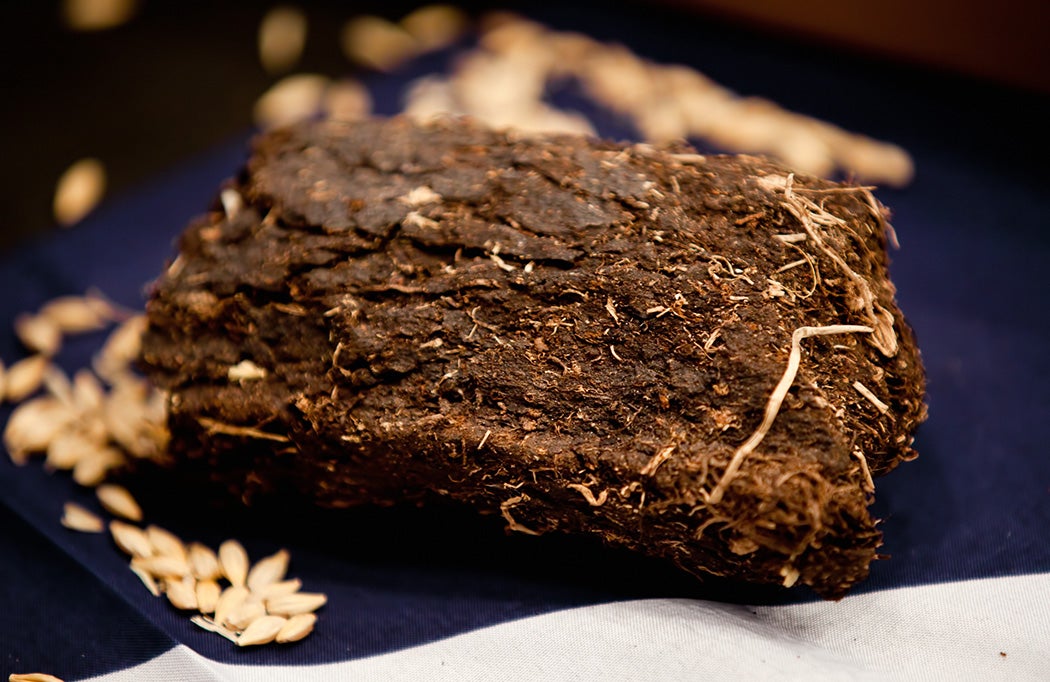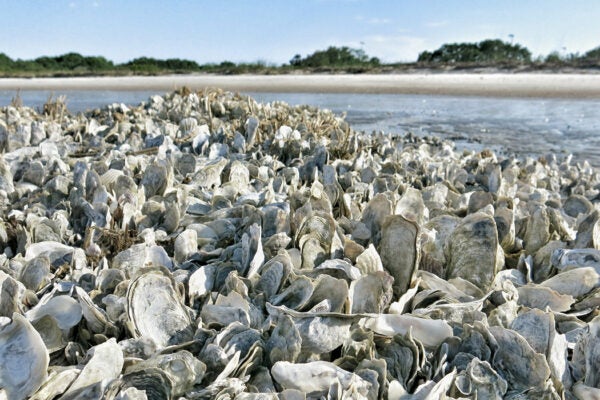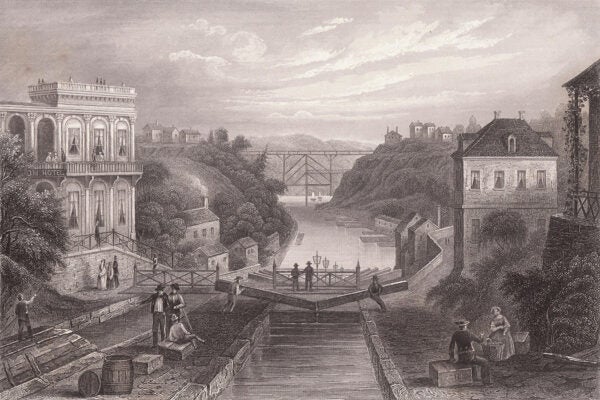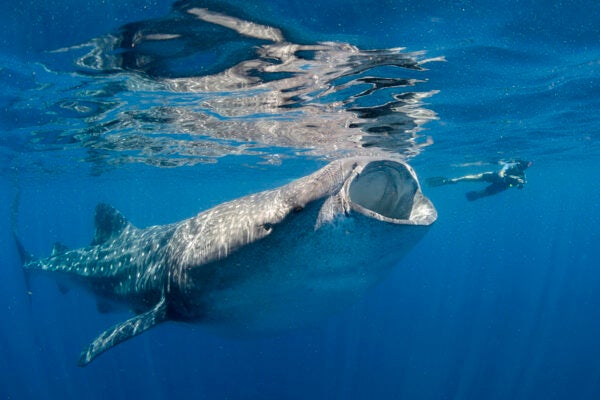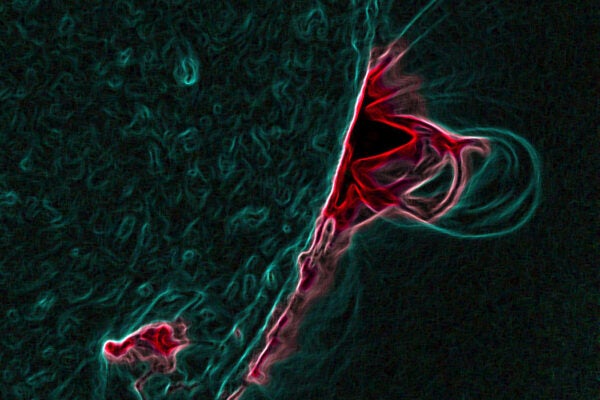Burnt. Smoky. Medicinal. Each of these represents a subcategory of “peaty” whisky in the Scotch Whisky Research Institute’s brightly colored flavor wheel.
A more chemistry-focused flavor wheel might include names like lignin phenols, aromatic hydrocarbons, or nitrogen-containing heterocycles. Perhaps less appealing, but these chemicals define the flavors of Scotch whisky and represent just a few of the many types of organic carbon that are stored in peatlands.
However, when peat is burned for the production of whisky, ancient carbon is released into the atmosphere. Approximately 80 percent of Scotch whisky is made using peat as a fuel source for drying barley during the malting process. The aromas of the burning peat, or “reek” as it is known in the industry, are steeped into the grains providing the intense smoky flavors associated with many Scotch whiskies.
Historically, peat was a critical fuel resource for Scotland—a nation famously rich in peatlands with few trees for wood-burning. But as the industry has modernized, peat burning in whisky manufacturing has become less a story of adapting to resource limitations and more one of tradition and distinctive flavoring.
There is little debate about the importance of peat burning in generating some of the most highly sought-after flavors in the world of whisky. Some enthusiasts identifying as “peat heads” track the parts per million (ppm) of peaty compounds in their favorite brands. The ppm measure represents phenol concentrations (a group of aromatic organic compounds) in the malted barley. But this does not represent how peaty your whisky will taste as much will get lost in subsequent processes. Nor does the ppm represent how much peat was burned in production.
Most of the peat that is extracted in Scotland is used in horticulture as compost to grow things like mushrooms, lettuce and houseplants. However, both the Scottish and UK governments are making efforts to reduce peat extraction for gardening needs.
The Scotch whisky industry makes up about 1 percent of total peat use in Scotland. But, as horticulture practices change, this may represent a larger portion of peat use in the future.
In 2023, the Scotch whisky industry outlined a long-term sustainability plan that expresses goodwill but lacks clearly defined goals towards peatland restoration.
Such policies that ban or limit the use of peat in certain industries have followed an increased awareness of how important peatlands are to locking carbon away instead of releasing it into our atmosphere. Despite making up only about 3 percent of Earth’s land surfaces, peatlands store more carbon than all the world’s forests.
So, should you worry about the climate consequences of peat use in Scotch whisky?
No matter how you slice it, harvesting peat is not good for the environment—and getting your hands on a nice dry slab of peat to extract those smoky flavors is no easy task. Peat is formed by waterlogged, oxygen-poor conditions that slow the natural breakdown process of plant material.
While it is critical for healthy peatlands, excess water is not ideal for burning or transporting peat. Hence, peat extraction usually involves the extensive draining of peatlands. This halts the natural peat accumulation process and releases greenhouse gases from the now-degraded peats into the atmosphere.
More than 80 percent of Scotland’s peatlands are degraded.
Some recovery efforts are being made, and it has been suggested that the whisky industry can offset their peat degradation by investing in peat restoration. But, peatland restoration is a long-term and imprecise solution that might take decades to properly assess, while existing peatlands are needed as a natural carbon sink now.
Flavor Innovations
There are reasons for “peat heads” (both whisky fans and climate warriors) to feel optimistic about the future of this industry.
For decades, the barley malting industry has focused on extracting the most flavor out of the least peat. Innovations in enhanced peat burning efficiency and investigations into peat flavoring alternatives are just some of the ways that the whisky industry is decreasing its peat footprint.
Change in this sector takes time. Any innovations in whisky made today must age for at least three years before being ready for the “flavor wheel”. This delay underscores the urgency of developing new methods as it will take time to find the perfect eco-friendly recipe that compromises neither the taste nor tradition of Scotch whisky.
Weekly Newsletter
In the meantime, whisky drinkers can seek out distilleries that are taking active steps to decrease their environmental impact and try drinking peat-free or peat-efficient whiskies.
To continue celebrating the uniqueness of peat as a flavor in whisky, we need to better acknowledge the effect it has on peatland degradation and continue to advocate for positive changes in the industry.
The story of peat use in Scotch whisky will continue to evolve. But while experimenting with future flavors, Scotland must preserve one of this nation’s most precious environmental resources.![]()
This article is republished from The Conversation under a Creative Commons license. Read the original article.
Support JSTOR Daily! Join our membership program on Patreon today.
